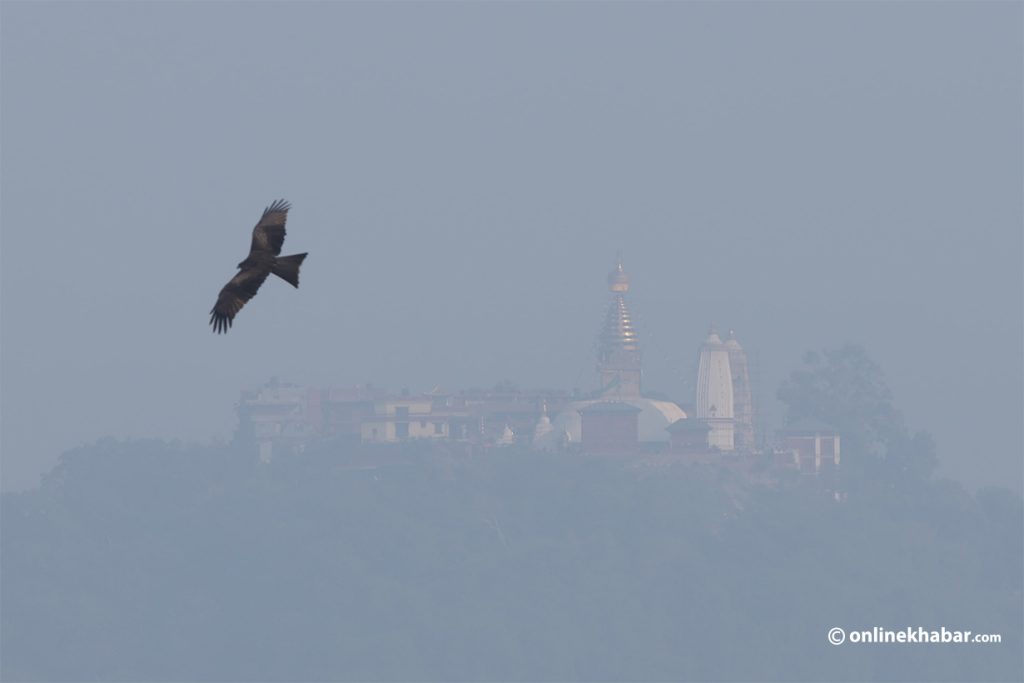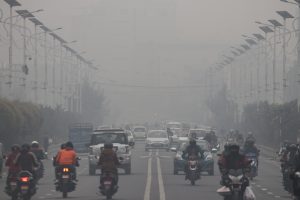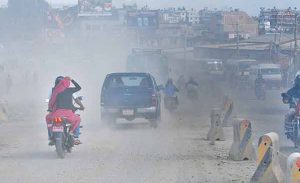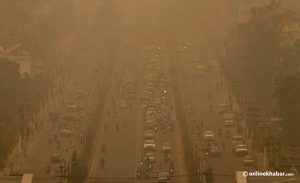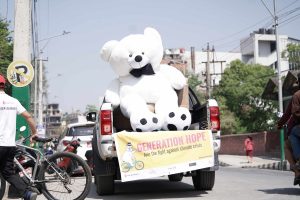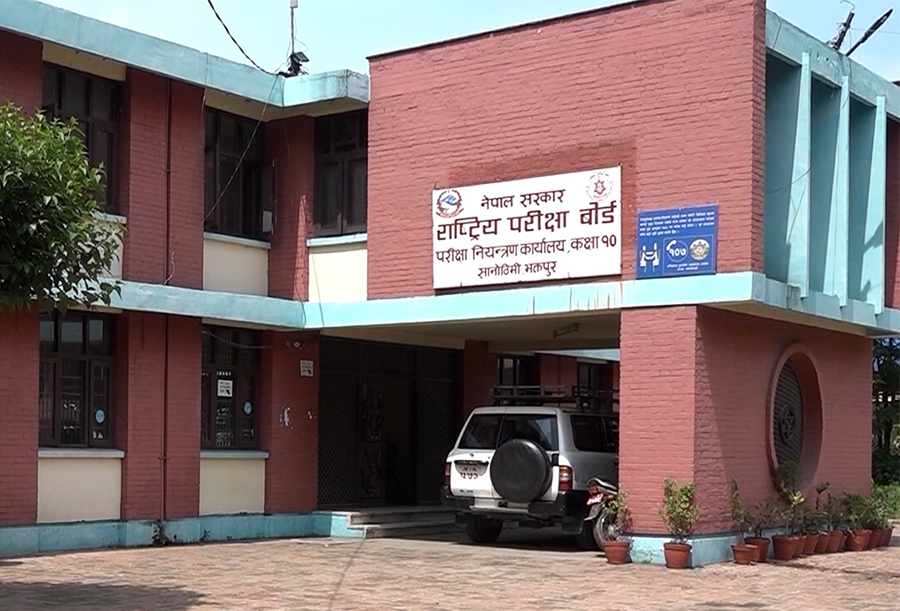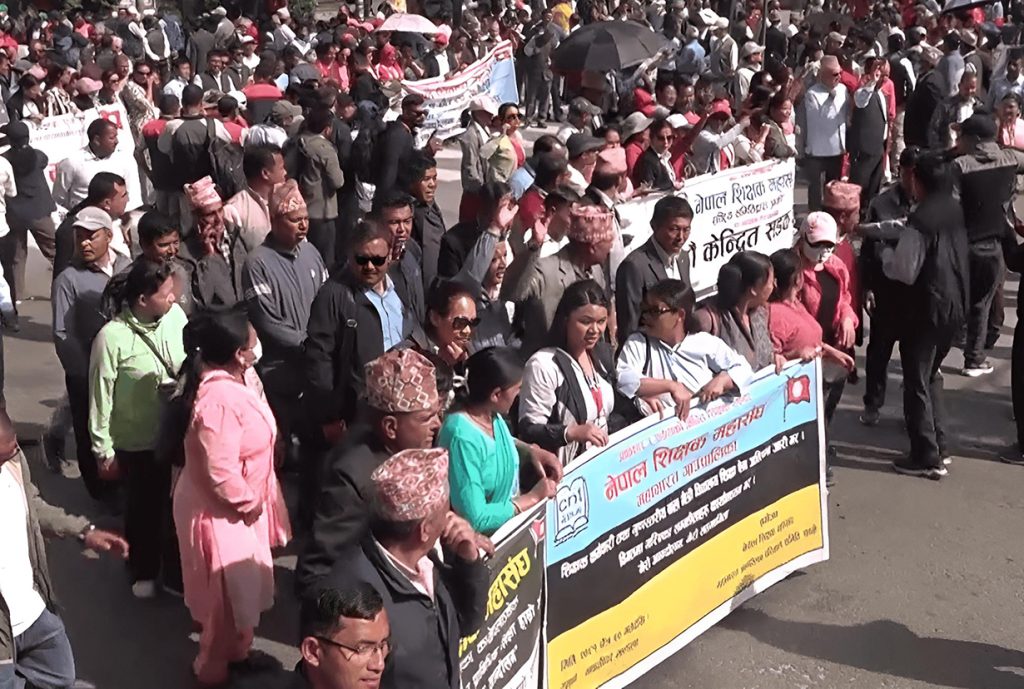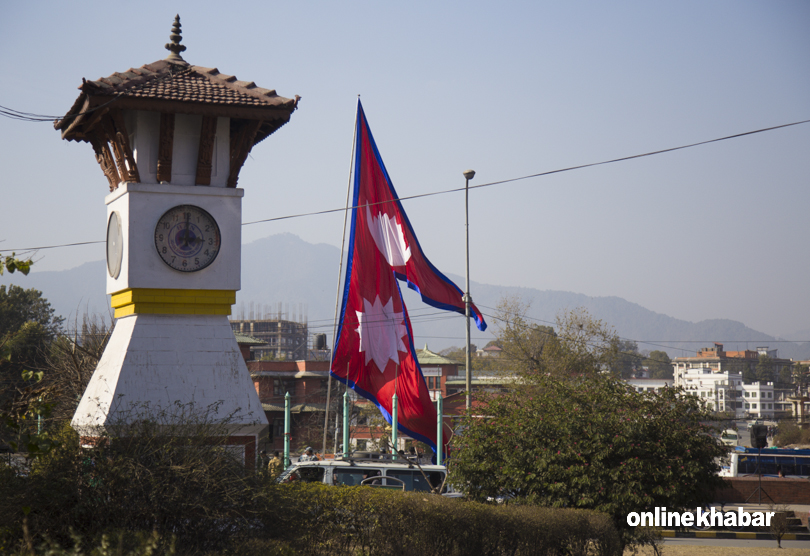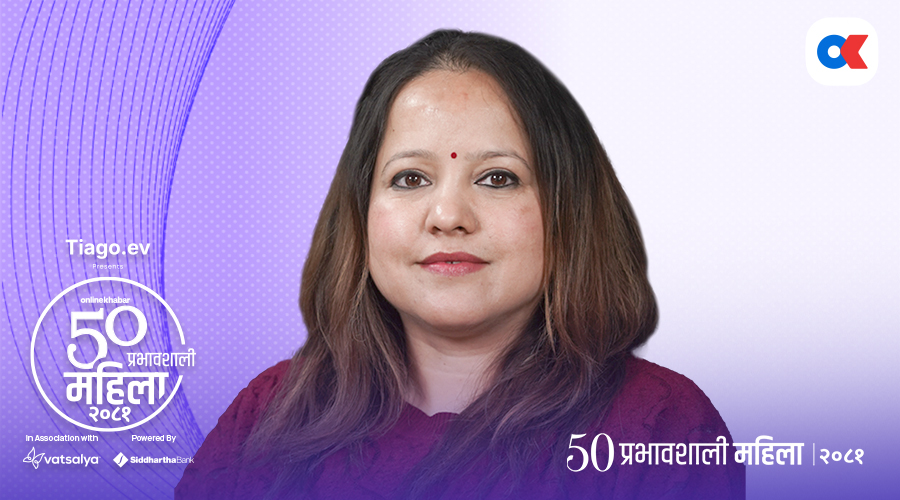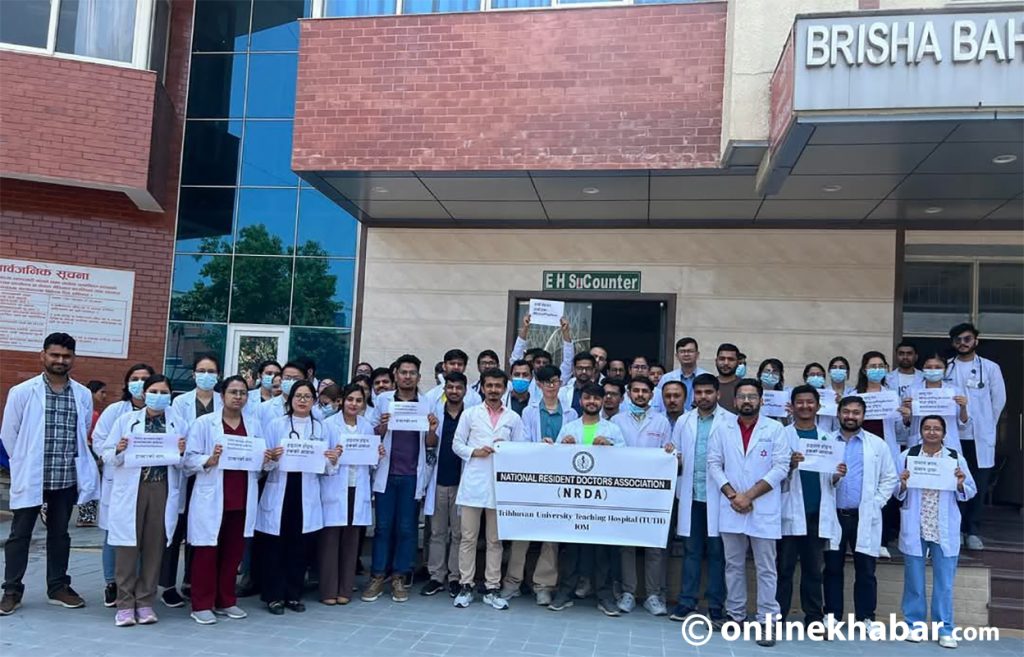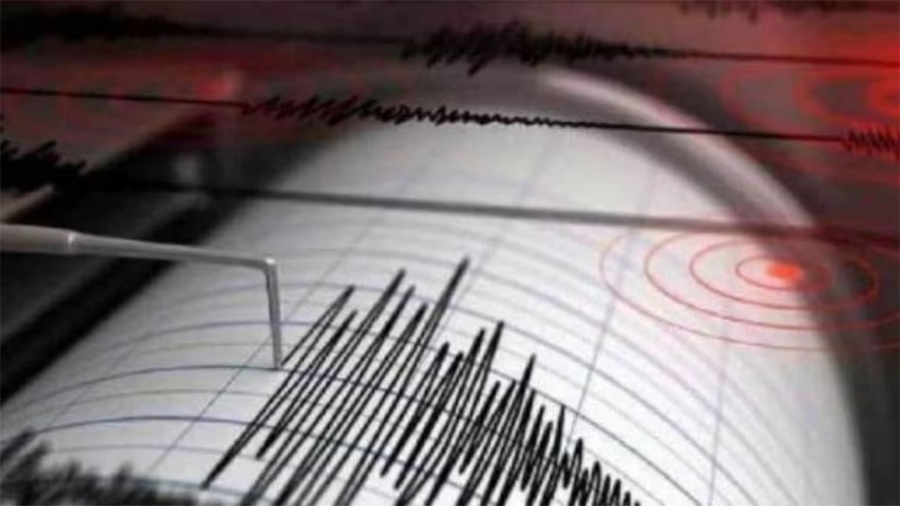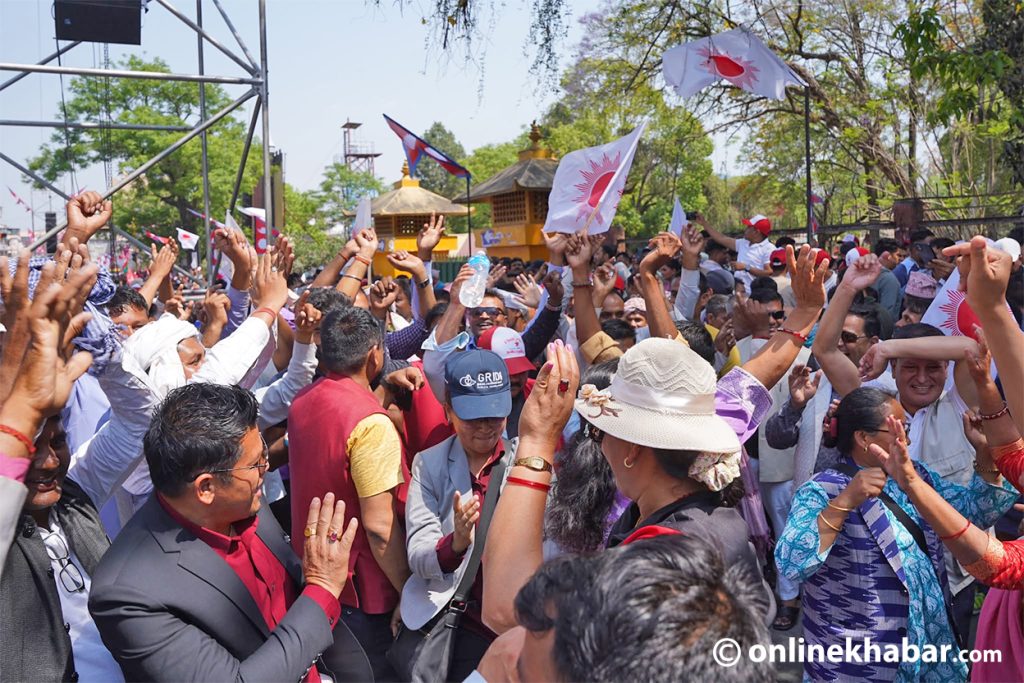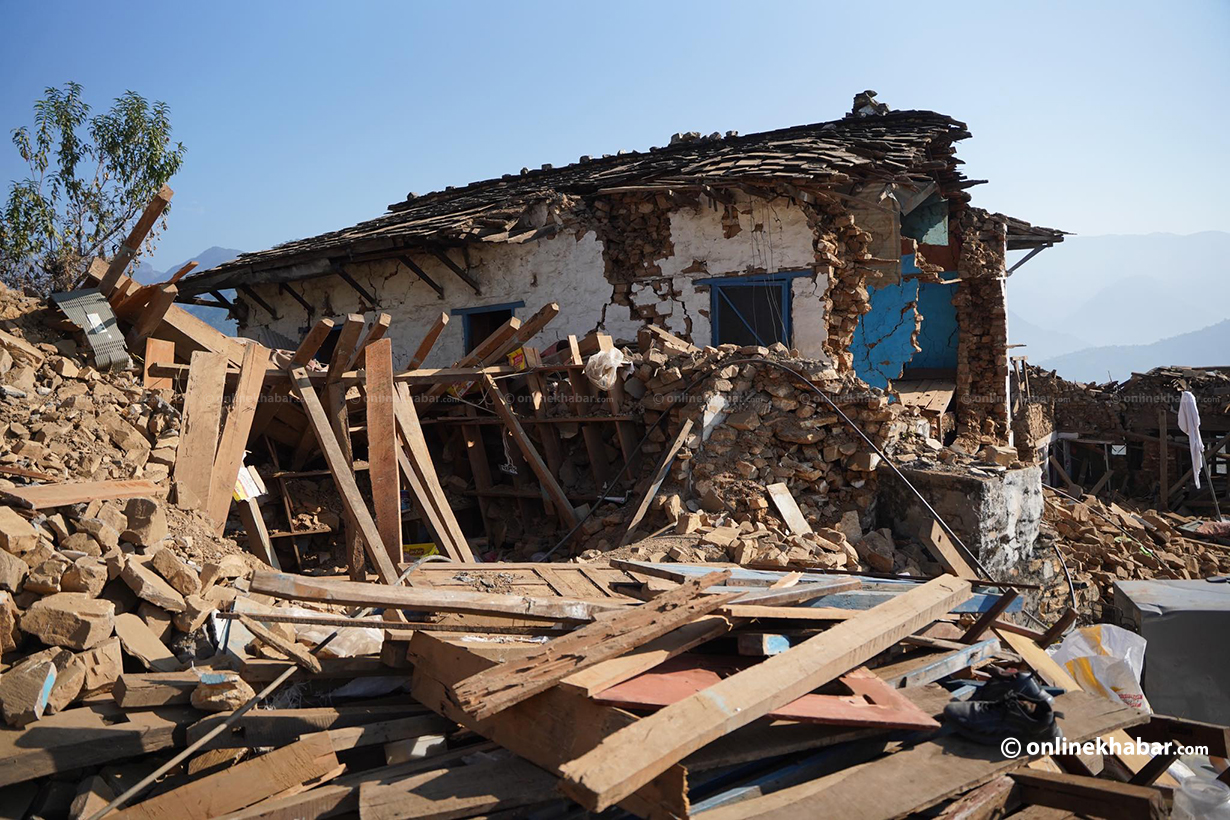
Kathmandu woke up to a hazy sky on Tuesday, with smog obscuring the sunlight. Many residents experienced irritation in their eyes and difficulty breathing, signaling severe air pollution in the valley.
Nawaraj Koirala from Bhaktapur felt a burning sensation in his eyes as he rode to work in Baneshwor. By the time he reached Koteshwor, his eyes were so irritated that he had to stop and wash his face. Similarly, Sita Thapa from Kalanki, who had gone to Kalimati for groceries, had to rush home due to severe eye discomfort and throat irritation.
According to the Department of Environment, Kathmandu’s air pollution has reached an unhealthy level, making it one of the most polluted cities in the world. IQAir’s data shows that the city’s Air Quality Index (AQI) hit 268 on Wednesday, significantly surpassing the unhealthy threshold of 151-200 and nearing hazardous levels above 300.
Hospitals across Kathmandu have reported a sharp increase in patients suffering from eye irritation, sore throats, persistent coughs, and respiratory distress. Pulmonologist Dr Raju Pangeni stated that more than half of the outpatients he has treated in recent days have developed respiratory issues due to air pollution. Many patients exhibit prolonged coughs lasting weeks, unlike viral infections that typically resolve in days.
Emergency rooms and ICUs are also seeing an influx of patients with oxygen deficiency, pneumonia, and severe respiratory distress requiring ventilator support. While the most vulnerable groups include children, the elderly, and those with pre-existing conditions, even healthy individuals are reporting adverse effects.
Wildfires, brick kilns, and vehicle emissions worsening pollution
Air quality experts attribute the worsening pollution to a combination of factors, including wildfires, vehicular emissions, and industrial pollution. Wildfire expert Sundar Prasad Sharma noted that 80% of the current pollution stems from forest fires. Over 300 wildfires are currently burning across Nepal, particularly in Parsa, Chitwan, Makwanpur, Sindhuli, and Udayapur, with their smoke reaching Kathmandu.
Additionally, stagnant atmospheric conditions have trapped dust and pollutants over the valley. “Without rainfall, airborne particles remain suspended, exacerbating pollution levels,” said environmental inspector Govinda Lamichhane.

Dr Bhupendra Das, an environmental expert, warned that Nepal’s air pollution peaks during winter and the dry season, worsened by brick kilns, agricultural burning, and deforestation. “Kathmandu’s bowl-shaped geography further traps pollutants, making the situation more severe,” he added.
Health implications: A silent killer
The impact of air pollution extends beyond respiratory diseases. According to Nepal’s Burden of Disease report, cardiovascular diseases—closely linked to air pollution—are the leading cause of death in the country, claiming over 46,000 lives annually. Chronic respiratory illnesses account for over 40,000 deaths.
Cardiologist Dr Rajendra Koju explained that fine particulate matter (PM2.5) in the air can enter the bloodstream, increasing the risk of heart attacks, strokes, high blood pressure, and even cancer. Similarly, ophthalmologist Dr Rita Gurung warned of rising cases of eye allergies, dry eye syndrome, and retinal damage due to prolonged exposure to polluted air.
The impact of air pollution is particularly severe on outdoor workers, drivers, and school-going children. Last year, a synthetic lung installed outside the Ministry of Health turned black within 15 days, visually demonstrating the severity of air pollution’s impact on human health.
Experts stress the urgent need for action, including urban planning reforms, renewable energy adoption, reforestation, and strict pollution control measures. “Air pollution is a silent killer, affecting every organ in the body,” warned Dr Pangeni. “Without immediate intervention, the health crisis will only worsen.”





